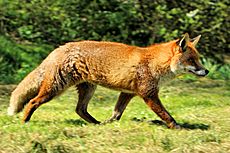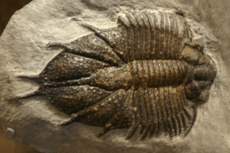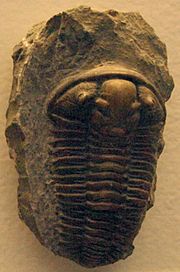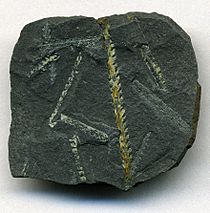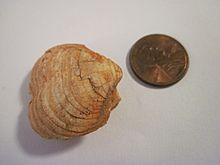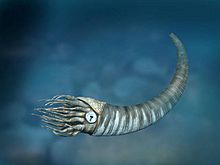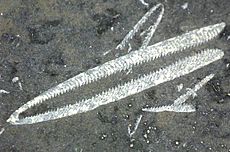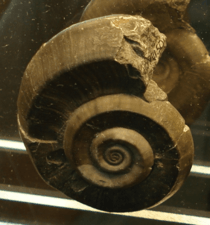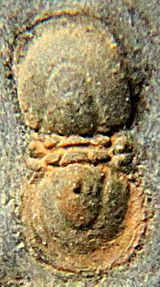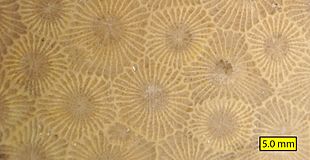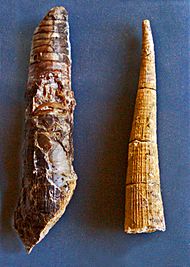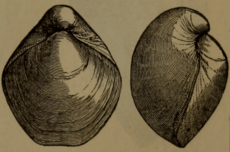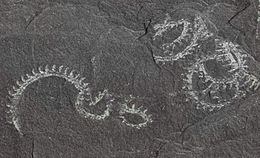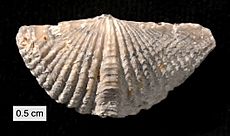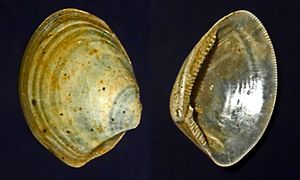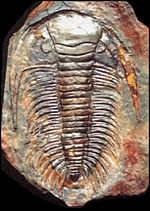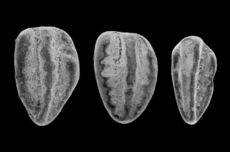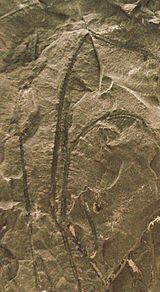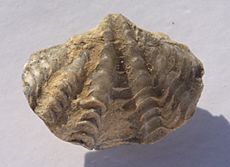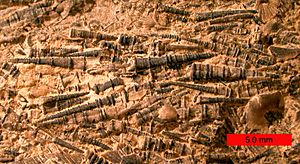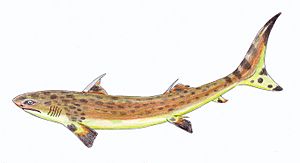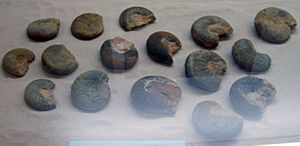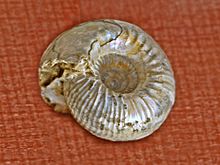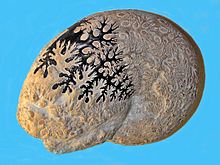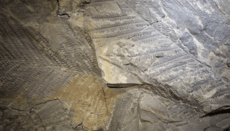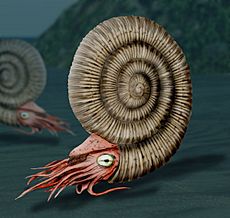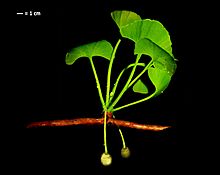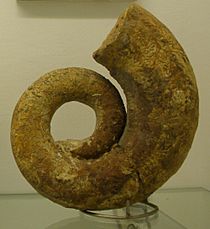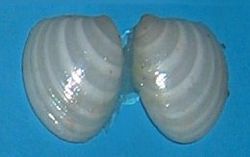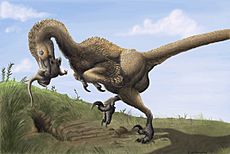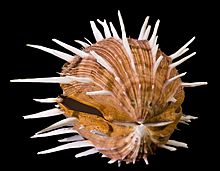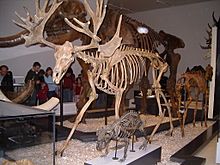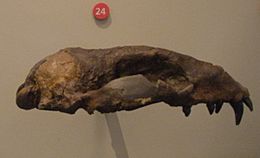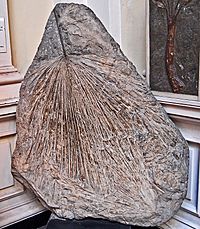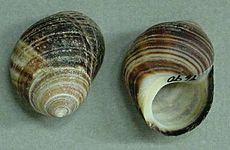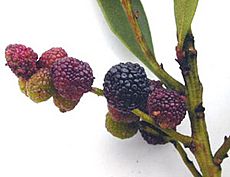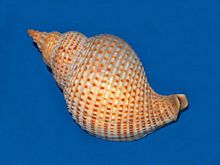List of the prehistoric life of Alaska facts for kids
The prehistoric life of Alaska includes all the ancient plants and animals whose fossil remains have been found in the US state of Alaska. These fossils tell us about the amazing creatures that lived in Alaska millions of years ago, from tiny sea creatures to giant woolly mammoths and dinosaurs!
Contents
Ancient Life in the Paleozoic Era
The Paleozoic Era was a very long time ago, from about 541 to 252 million years ago. During this time, life on Earth became much more complex. In Alaska, scientists haven't found any fossils from the very oldest part of the Paleozoic Era, called the Precambrian. But they have found many fossils from later parts of this era.
Cool Paleozoic Creatures of Alaska
Here are some of the interesting prehistoric animals and plants found in Alaska from the Paleozoic Era:
- †Acanthopyge – This was a type of trilobite, an ancient sea creature with a hard, segmented shell, like a modern-day crab or shrimp.
- †Agoniatites – A type of ammonite, which were ancient sea creatures related to modern squids and octopuses, but with coiled shells.
- †Athyris – A kind of brachiopod, which are shelled marine animals that look a bit like clams but are different inside.
- †Atrypa – Another common brachiopod from this time.
- †Aviculopecten – This was an ancient bivalve, similar to a scallop or clam.
- †Bellerophon – A type of ancient sea snail.
- †Calymene – Another kind of trilobite, known for its distinct head shape.
- †Catenipora – A type of ancient coral that grew in chain-like patterns.
- †Chonetes – A small, ribbed brachiopod.
- †Climacograptus – These were graptolites, tiny colonial animals that lived in the ocean and floated or were attached to the seafloor.
- †Composita – A common brachiopod with a rounded, often smooth shell.
- †Cyrtoceras – A type of nautiloid, a shelled creature related to modern nautiluses.
- †Dalmanites – A large trilobite.
- †Didymograptus – Another type of graptolite, often found in V-shapes.
- †Euomphalus – A type of sea snail with a flat, coiled shell.
- †Favosites – A common type of coral, often called "honeycomb coral" because of its many small, hexagonal tubes.
- †Geragnostus – A small, blind trilobite.
- †Hexagonaria – A colonial coral, sometimes called "Petoskey stone" when fossilized.
- †Kionoceras – A straight-shelled nautiloid.
- †Lithostrotion – Another type of colonial coral.
- †Meristella – A brachiopod with a smooth, oval shell.
- †Monograptus – A common type of graptolite, often found as single-branching forms.
- †Mucrospirifer – A brachiopod with wide, wing-like extensions on its shell.
- Nucula – A small, modern-looking clam that has been around since ancient times.
- †Paradoxides – A very large trilobite from the Cambrian period.
- †Pecopteris – An ancient fern.
- †Polygnathus – A type of conodont, which were tiny, eel-like animals with tooth-like structures.
- †Pseudobornia – An early tree-like plant.
- †Psilophyton – A very early vascular plant, meaning it had tissues to transport water and nutrients.
- †Spirifer – A common brachiopod with a distinctive spiral internal structure.
- †Tentaculites – Small, cone-shaped fossils from a group of animals whose exact identity is still a mystery.
- †Wodnika – An ancient shark.
Life in the Mesozoic Era
The Mesozoic Era, often called the "Age of Dinosaurs," lasted from about 252 to 66 million years ago. This era saw the rise of dinosaurs, flying reptiles, and marine reptiles. Many new types of plants also appeared.
Amazing Mesozoic Animals of Alaska
Here are some of the fascinating creatures from the Mesozoic Era found in Alaska:
- †Alaskacephale – This was a type of pachycephalosaur, a dome-headed dinosaur that lived in Alaska during the Late Cretaceous period. It's special because its fossils were first found here!
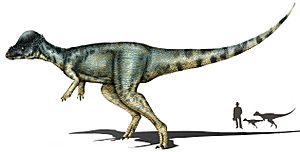
- †Amaltheus – A type of ammonite, a coiled-shell sea creature.
- †Anagaudryceras – Another kind of ammonite.
- †Arcticoceras – An ammonite found in the Arctic regions.
- †Cadoceras – A common ammonite from the Middle Jurassic.
- †Calliphylloceras – An ammonite with a smooth, elegant shell.
- Cladophlebis – A fern that lived from the Permian to the Late Cretaceous.
- †Claraia – A small, thin-shelled bivalve that was very common right after the biggest mass extinction in Earth's history.
- †Dactylioceras – A ribbed ammonite from the Early Jurassic.
- †Didymoceras – An ammonite with an unusual, uncoiled shell shape.
- †Dromaeosaurus – A small, meat-eating dinosaur, related to Velociraptor.
- †Edmontosaurus – A large, duck-billed dinosaur. Fossils of these plant-eaters are common in Alaska.
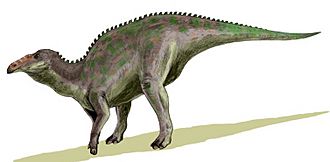
- Ginkgo – The ginkgo tree is a "living fossil," meaning it has changed very little over millions of years. Its ancient relatives lived in Alaska.
- †Gryphaea – A type of oyster with a very curved, thick shell.
- †Hesperornis – A large, flightless diving bird with teeth, that lived in the Late Cretaceous seas.
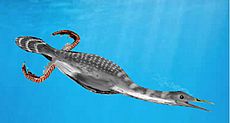
- †Inoceramus – A very large, common bivalve from the Mesozoic Era.
- †Lytoceras – An ammonite with a distinctive, ribbed shell.
- †Myophorella – A type of bivalve with strong ribs and bumps on its shell.
- †Nanuqsaurus – This was a tyrannosaur, a meat-eating dinosaur related to T. rex, that lived in Alaska. Its name means "polar bear lizard"!
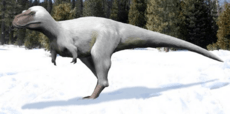
- Nucula – A small, modern-looking clam that has been around since ancient times.
- †Pachydiscus – A large, thick-shelled ammonite.
- †Pachyrhinosaurus – A horned dinosaur, similar to Triceratops, but with a large, rough boss on its nose instead of a horn. Pachyrhinosaurus perotorum was first found in Alaska.
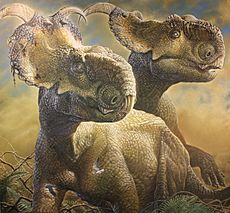
- Platanus – The plane tree, a type of tree whose ancient relatives grew in Alaska.
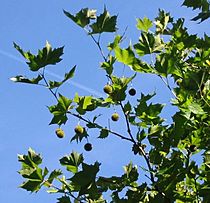
- †Saurornitholestes – A small, agile, meat-eating dinosaur, part of the dromaeosaurid family (like Velociraptor).
- Spondylus – A spiny oyster.
- †Troodon – A small, bird-like dinosaur known for its large brain and sharp teeth.
- †Ugrunaaluk – Another type of duck-billed dinosaur, similar to Edmontosaurus, found in Alaska. Its name means "ancient grazer" in the Iñupiaq language.
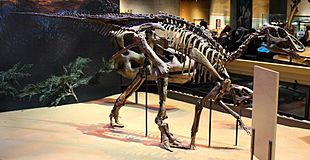
Life in the Cenozoic Era
The Cenozoic Era, from 66 million years ago to today, is often called the "Age of Mammals." After the dinosaurs died out, mammals grew larger and spread across the world. Alaska was home to many familiar and extinct mammals during this time.
Cenozoic Animals of Alaska
Here are some of the interesting prehistoric animals and plants found in Alaska from the Cenozoic Era:
- Alces – The moose, a large deer that still lives in Alaska today.
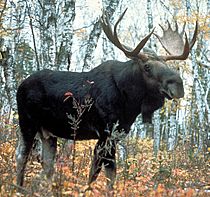
- Alopex – The Arctic fox, a small fox adapted to cold climates.
- †Arctodus – The giant short-faced bear, one of the largest bears that ever lived.
- †Arktocara – An ancient river dolphin that lived in Alaska during the Oligocene epoch.
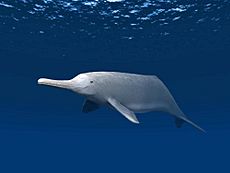
- Astarte – A type of clam.
- Balanus – Barnacles, which are small crustaceans that attach themselves to surfaces.
- Bison – Ancient bison, including the steppe bison. A famous mummified specimen called "Blue Babe" was found in Alaska!
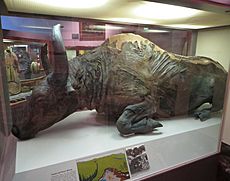
- †Bootherium – The woodland musk ox, an extinct relative of today's musk ox.
- Callorhinus – The northern fur seal, which still lives in Alaskan waters.
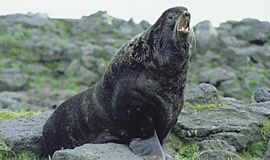
- Canis – Wolves, including the gray wolf, have lived in Alaska for a long time.
- †Cervalces – The stag moose, an extinct type of deer with large, complex antlers.
- Cervus – Elk, another type of deer.
- Chlamys – A type of scallop.
- Clinocardium – A type of cockle, a marine bivalve.
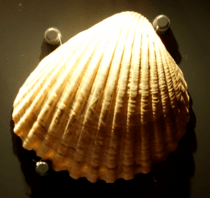
- †Desmatophoca – An ancient seal.
- Equus – Ancient horses, which roamed Alaska during the Ice Age.
- Erignathus – The bearded seal, a large seal found in Arctic waters.
- †Flabellaria – An ancient flowering plant.
- Hiatella – A type of clam that can attach itself to rocks.
- Histriophoca – The ribbon seal, known for its unique striped pattern.
- †Hydrodamalis – Steller's sea cow, a giant, gentle marine mammal related to manatees, which went extinct recently.
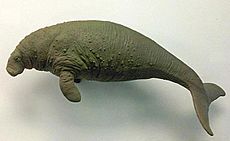
- Lemmus – Lemmings, small rodents found in Arctic regions.
- Liocyma – A type of clam.
- Littorina – Periwinkles, small sea snails.
- †Mammuthus – Woolly mammoths, giant hairy elephants that lived during the Ice Age. Their fossils are often found in Alaska's permafrost.
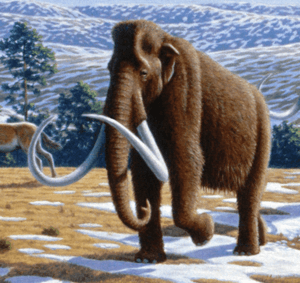
- Myrica – The firetree, a type of shrub or small tree.
- †Mya – A type of clam, including the soft-shell clam.
- Mytilus – Mussels, a common type of bivalve.
- Neptunea – A type of sea snail, or whelk.
- Nucula – A small, modern-looking clam that has been around since ancient times.
- Ochotona – Pikas, small, rabbit-like mammals.
- Odobenus – Walruses, large marine mammals with long tusks.
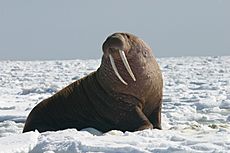
- Ovibos – Musk oxen, large, shaggy mammals adapted to cold environments.
- Ovis – Sheep, including Dall sheep.
- Phoca – Seals, including harbor seals.
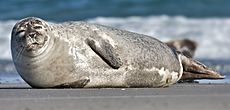
- Picea – Spruce trees, common in Alaska's forests.
- Pinus – Pine trees.
- Populus – Poplar trees, including aspens and cottonwoods.
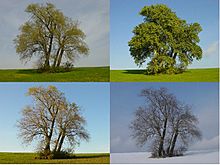
- Rangifer – Reindeer or caribou, a type of deer found in Arctic regions.
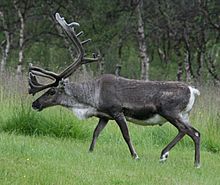
- Serripes – A type of cockle.
- Siphonalia – A type of whelk sea snail.
- Spermophilus – Ground squirrels.
- Strongylocentrotus – Sea urchins.
- Taxodium – Bald cypresses, a type of conifer tree.
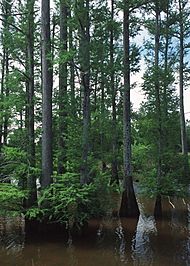
- Trichotropis – A type of sea snail.
- Tsuga – Hemlock trees.
- Ursus – Bears, including brown bears and polar bears.
- Vulpes – Foxes, including the red fox.
